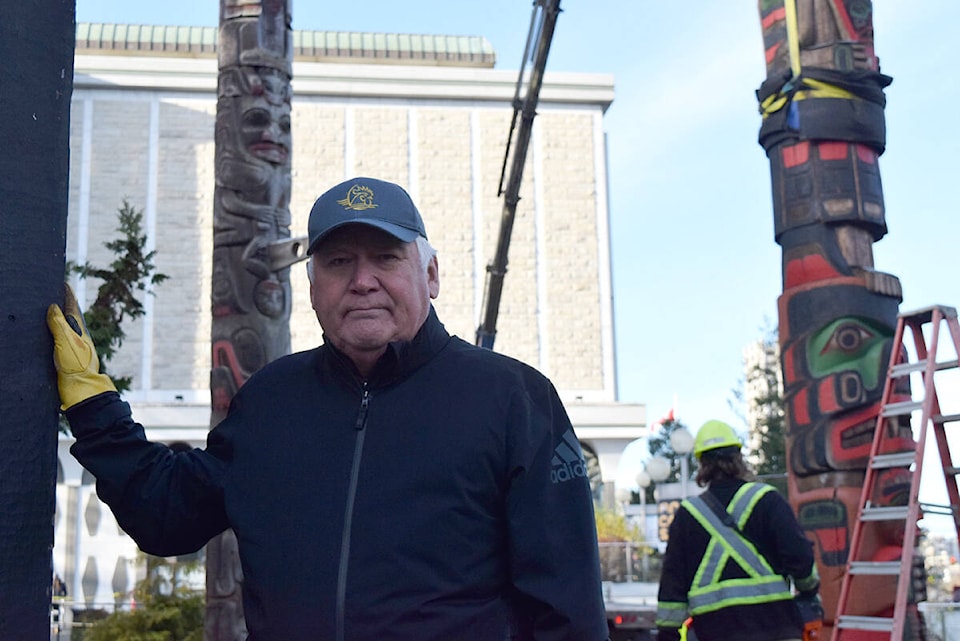Following months of restoration work, the first totem of now-famous carver Richard Hunt has been raised in a new position beside Wawaditla (Mungo Martin House) on the grounds of the Royal BC Museum.
The 3,500-pound Thunderbird Pole, formerly located in the museum’s small courtyard and before that, at its entrance, was moved from the restoration studio to its new central position at Thunderbird Park by crane.
The two-hour endeavour was witnessed by about a dozen members of the public on a frigid, clear morning Dec. 20.
The pole, originally carved in 1979, was Hunt’s first pole he completed independent of his father’s help, although much guidance came from his uncle, master carver Tommy Hunt.
“He’d show up for work before I did. Before I could unlock the door, he would tell me what to do for that day,” Richard recalled of the three-month process of working with his uncle.
READ MORE: How storytelling in tourism can support truth and reconciliation
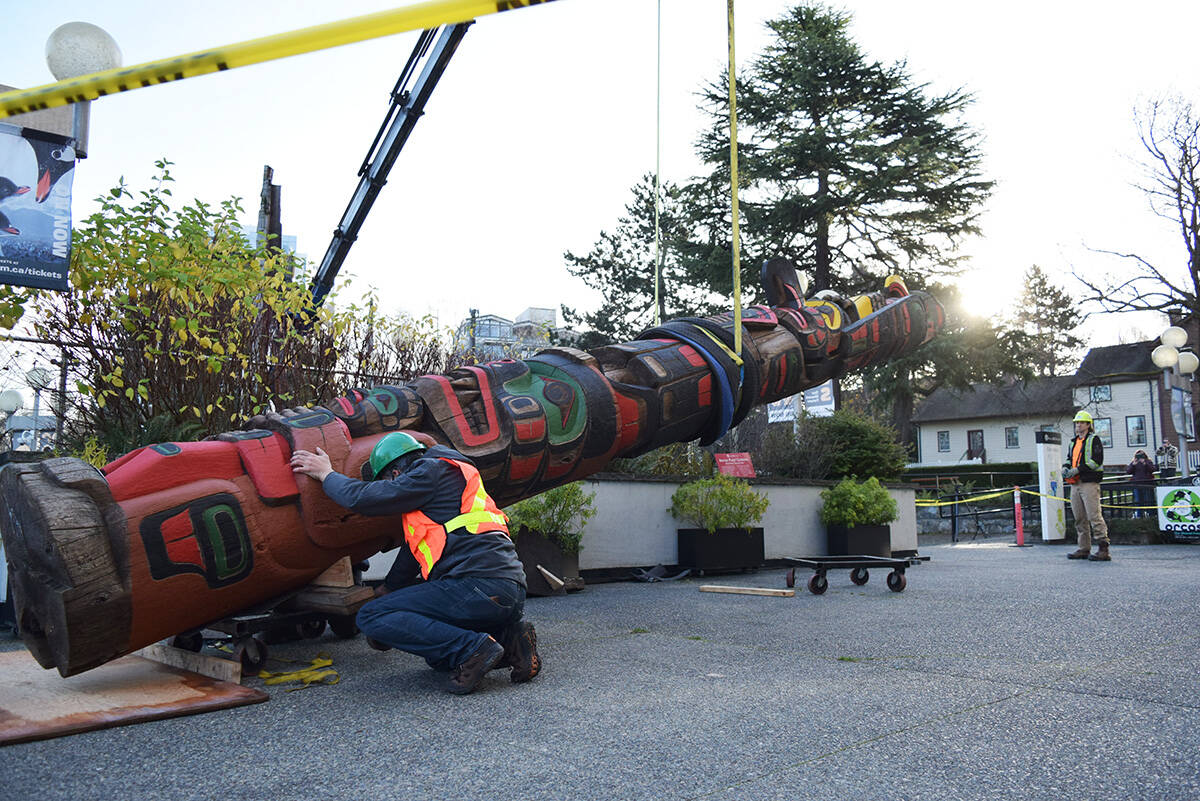
The thunderbird at the top of the pole depicts the head of the Hunt family, Richard’s younger brother, Tony. The next figure down features a man with the sun’s face, holding a copper plate with a bear design, signifying wealth, Hunt explained.
Another figure gives a nod to an incident from Hunt’s childhood days.
“Kids were daring each other to see how close they could get (to each other’s finger) with an axe,” he said. But his best friend, George “Slash” Taylor, danced too close to the knife’s edge. “One guy got too close to him and chopped his finger off,” Hunt said with a regretful laugh.
Years later, Hunt decided to immortalize his old friend and eventual best man by cleaving the left index finger from the pole’s lowest figure; a man being held by a bear.
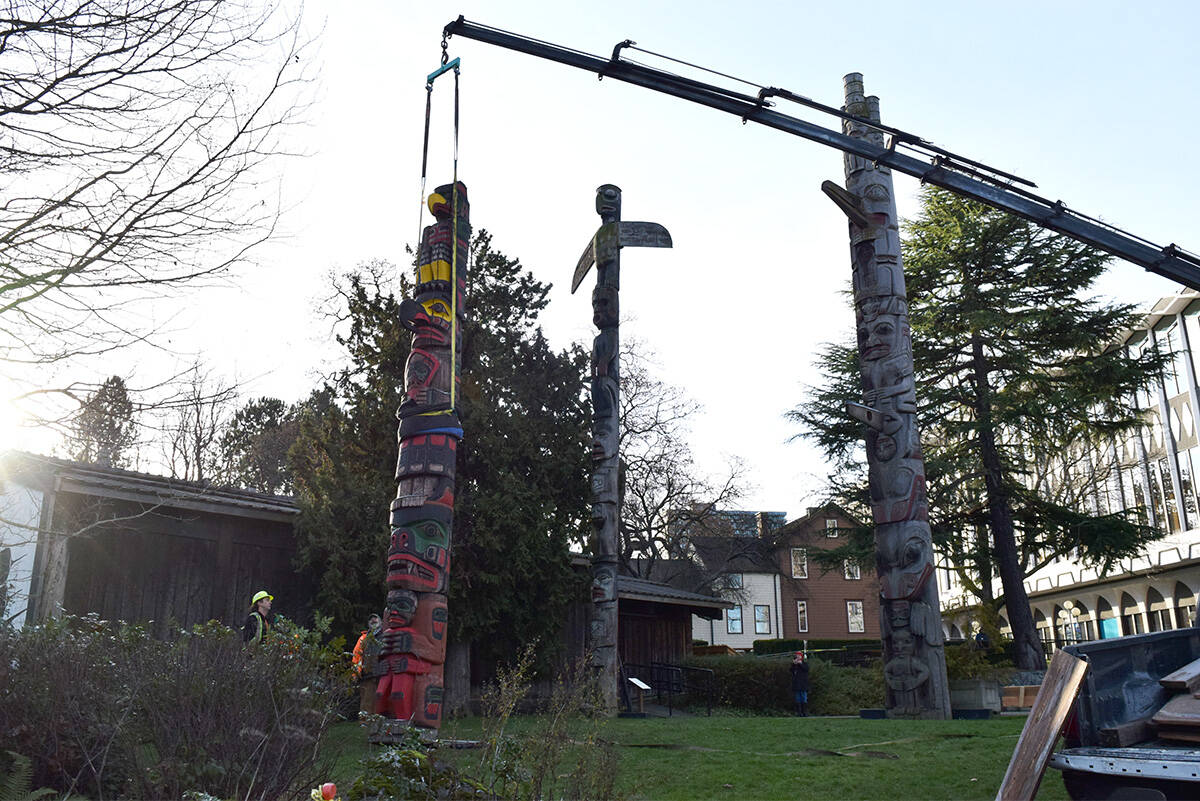
The cedar pole – made from the wood Hunt said makes the cradle and the grave – now stands in Thunderbird Park facing the intersection of Belleville and Douglas streets.
“I always thought it should be here,” he said, adding he’s honoured to stand the pole beside those carved by his father, Henry Hunt, and legendary carver Mungo Martin.
For its role in the revival of Indigenous culture on Vancouver Island, “Thunderbird Park should actually be a national heritage site,” Hunt said.
In 1953, Martin had hosted the first legal traditional potluck since its ban by the Canadian government in 1889.
“This is where our culture was reborn,” Hunt said.
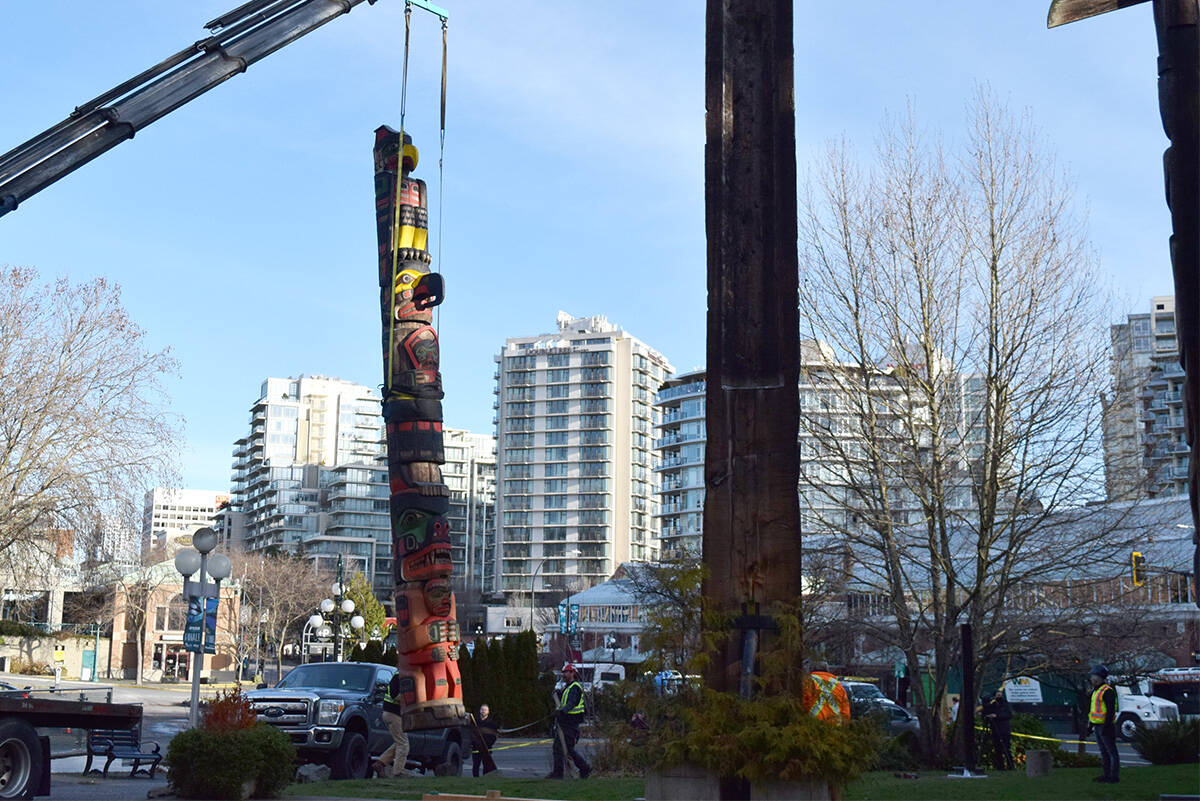
Following the painstaking restoration of the thunderbird pole, Hunt has been resting sore fingers. He’s working on smaller artworks for museums from Winnipeg to Santa Barbara, Calif., but at his age, he said, he had no coming plans to venture 36 feet high for pole carving.
Similar to how he got his start, he’d like to begin helping his own nephew with the craft.
“The government tried to stop us,” Hunt said. “But we’re still here. We’re still carrying on our tradition.”
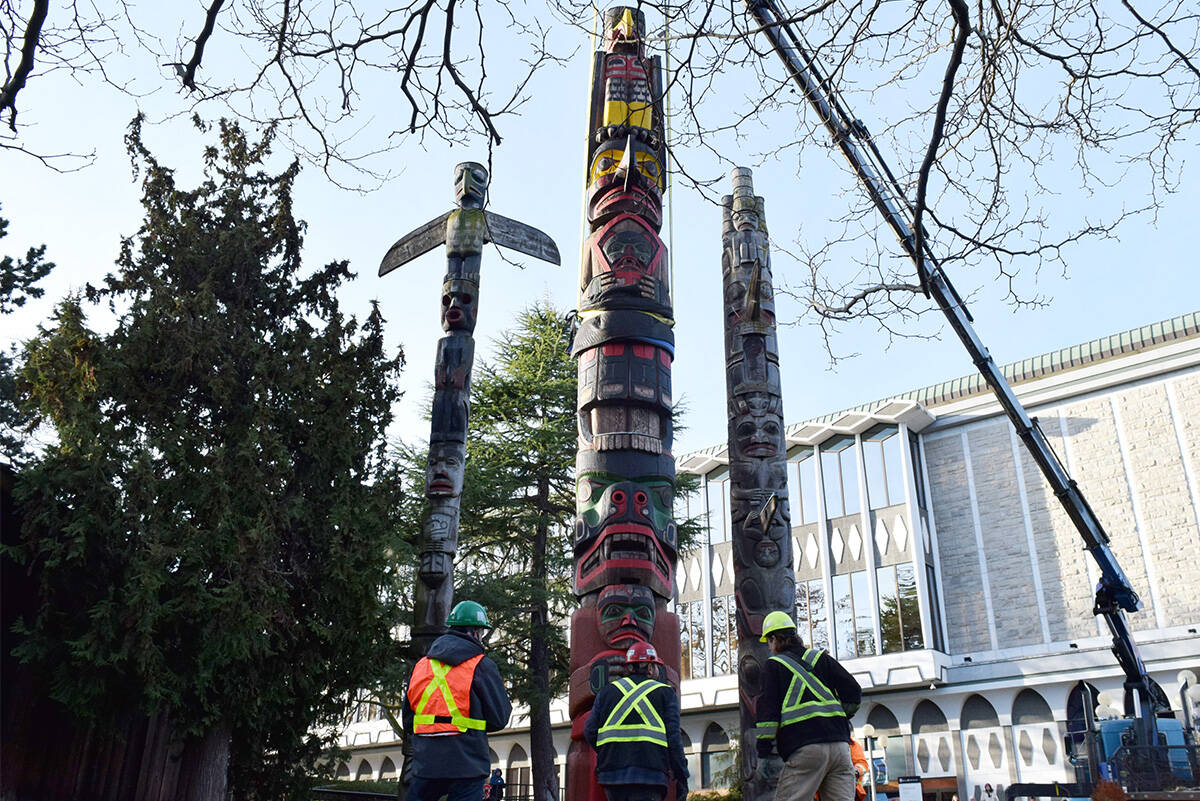
Read more about Thunderbird Park on the Royal BC Museum website here.
READ MORE: BC Ferries unveils Indigenous design for next Salish Class vessel
***
Plan your adventures throughout the West Coast at westcoasttraveller.com and follow us on Facebook and Instagram @thewestcoasttraveller. And for the top West Coast Travel stories of the week delivered right to your inbox, sign up for our weekly Armchair Traveller newsletter!
